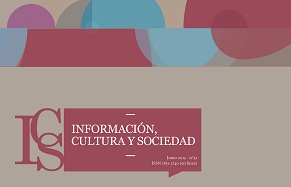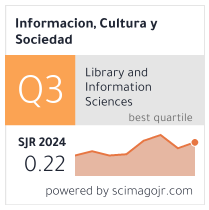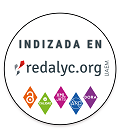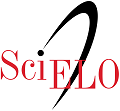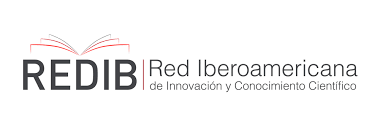Practical analysis of folksonomies: the case of the reference management software
Abstract
An analysis of the folksonomies developed in reference management software is performed, as a way to identify their potential use for the information retrieval in low controlled digital environments. There is also a proposal to identify methods and techniques not currently used in those websites, to improve the quality of the folksonomies as information retrieval tools. For that reason, the folksonomies developed at the reference management software CiteULike, Mendeley and Bibsonomy are studied. Their principal characteristics regarding type, form and construction of the tags are detailed. The interfaces used for creation and edition of the tags in each one of the reference management software are also described. The conclusion is that, based on the form and structure used to create them, the folksonomies might be useful for information retrieval at this kind of website, and new methods and techniques are proposed to improve the quality of the folksonomy tags.Downloads
References
Barité, Mario. 2014. El control del vocabulario en la era digital: revisión conceptual. En Scire. Vol. 20, no. 1, 99-108. <http://www.ibersid.eu/ojs/index.php/scire/article/view/4196> [Consulta: 1 diciembre 2015].
Cañada, Javier. 2016. Tipologías y estilos en el etiquetado social. <http://www.terremoto.net/tipologias-y-estlos-en-el-etiquetado-social/> [Consulta: 4 enero 2016].
Font, F., J. Serrà y X. Serra. 2015. Analysis of the impact of a tag recommendation system in a real-world folksonomy. En ACM Transactions on Intelligent Systems and Technology. Vol. 7, no. 1. <http://mtg.upf.edu/node/3206> [Consulta: 04 enero 2016].
Golder, S.A. y B.A. Huberman. 2006. Usage patterns of collaborative tagging systems. En Journal of Information Sciencie. Vol. 32, no. 2, 198-208. <http://jis.sagepub.com/content/32/2/198.abstract> [Consulta: 4 enero 2016].
Guy, M. y E. Tonkin. 2006. Folksonomies: tidying up tags? En D-Lib Magazine. Vol. 12, no. 1. <http://www.dlib.org/dlib/january06/guy/01guy.html> [Consulta: 4 enero 2016].
Hammond, T.; T. Hannay; B. Lund y J. Scott. 2005. Social bookmarking tools. En D-Lib Magazine. Vol. 11, no. 4. <http://www.dlib.org/dlib/april05/hammond/04hammond.html> [Consulta: 4 enero 2016].
Jäschke, R.; L. Marinho; A. Hotho; L. Schmidt-Thieme y G. Stumme. 2007. Tag recommendations in Folk-sonomies. En Knowledge Discovery in Databases. Vol. 4702, 506-514. <http://link.springer.com/chapter/10.1007%2F978-3-540-74976-9_52> [Consulta: 4 enero 2016].
Martínez Tamayo, A. M. y J. C. Valdez. 2009. Indización y clasificación en bibliotecas. Buenos Aires: Alfagrama.
Mathes, A. 2004. Folksonomies: Cooperative Classification and Communication Through Shared Metadata. <http://www.adammathes.com/academic/computer-mediated-communication/folksonomies.html> [Con-sulta: 4 enero 2016].
Montero, Y. H. 2006. Indización social y recuperación de información. En No solo usabilidad. Vol. 5. <http://www.nosolousabilidad.com/articulos/indizacion_social.htm> [Consulta: 4 enero 2016].
Spiteri, L. F. 2007. The structure and form of folksonomy tags: the road to the public library catalogue. En Webology. Vol. 4, no. 2, 13-25. <http://www.webology.org/2007/v4n2/a41.html> [Consulta: 4 enero 2016].
Taylor, A.G. y D.N. Joudrey. 2009. The organization of information. 3th ed. Englewood, Colorado: Libraries Unlimited.
Weinberger, D. 2007. Everything is miscellaneous: the Power of the New Digital Disorder. New York: Times Books.
Authors publishing in this journal acknowledge the conditions below:
- Authors retain the copyright of their work while they transfer the right of the first publishing to the journal, under the Creative Commons Attribution-ShareAlike 4.0 International (CC BY-SA 4.0) Licence, which allows third parties to reproduce them under the condition that express mention is given to the author and to its original publication in the journal.
- Authors may enter into other contractual and independent arrangements for the non-exclusive distribution of the version of the article published in this journal (for instance, it can be published in an institutional repository or in a book). In any case, an express mention should be given to its first publication in the journal.
- It is permitted and encouraged to publish online the articles (for example, on institutional or personal pages).
